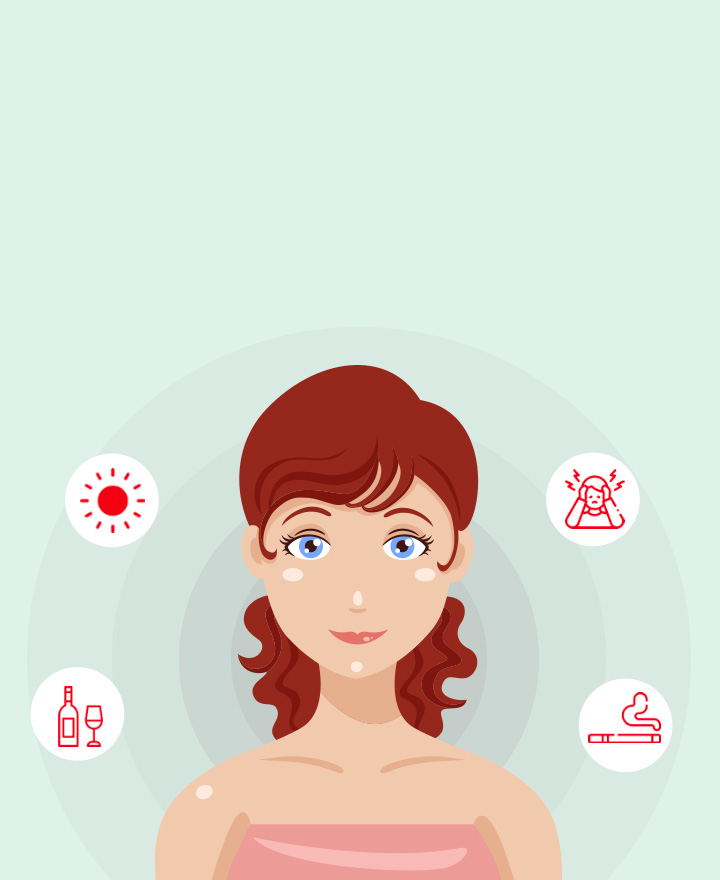

What Are the Symptoms of Vitiligo?
Vitiligo is a skin condition that turns areas of skin white. Sometimes, vitiligo can impact only a few areas of the skin; in others, the entire skin may turn white. Normally, the skin and hair colour is determined by melanin, and vitiligo occurs when the melanin-producing cells die or stop functioning. There is no cure for vitiligo. It is not a life-threatening condition and doesn’t cause any physical discomfort. However, it may make a person feel less confident about his/her appearance. While treatments can help restore colour to the affected skin, they cannot prevent further depigmentation or recurrence of the condition. Here, we will discuss the symptoms of vitiligo so you can seek timely medical advice.
Symptoms of Vitiligo
The symptoms are primarily the discolouration of skin in patches, and it can start at any age. Here are some noticeable symptoms of vitiligo.
1. Patches and Spots of Lighter Skin
Vitiligo damages the cells that make pigments. These damaged cells appear as spots and patches on the affected person’s skin. These skin patches can appear anywhere on the skin, including the genitals.
2. Patches Whiten
When vitiligo actively destroys the cells responsible for giving colour to a person’s skin, the patches usually appear pink or tricoloured, causing a tan zone between the natural skin colour and the white vitiligo.
3. Lighter Patches inside the Mouth or Nose
Vitiligo can cause loss of colour even inside the mouth, on or around the lips, and around or inside the nose.
4. Patches Get Sunburn Easily
The skin that gets affected by vitiligo has delicate pigments. These areas become more sensitive to the sun and get tanned or burned easily. On the other hand, sunburn can increase the progression of vitiligo. Therefore, protecting your skin from the sun is very important.
5. Itchy Patches
Usually, vitiligo patches do not cause any discomfort. However, when vitiligo starts spreading, these patches may start itching.
6. Greying of Hair
Vitiligo can impact a person’s hair and make it lose its colour. It turns the skin white, and the hair in that part of the skin turns white. Vitiligo can also cause premature and permanent greying of hair.
7. Body Hair Turns White
Once vitiligo starts progressing, body hair starts whitening. Vitiligo can also turn a person’s eyebrows and eyelashes white.
8. Hearing Loss
Apart from affecting the skin, vitiligo also affects a person’s auditory functions. Melanocytes are responsible for the pigmentation of our skin, hair, and eyes. They are also present in the inner ear. In case of vitiligo, the immune system mistakenly attacks melanocytes, causing white patches on the skin. If the melanocytes in inner ear are also attacked, it can lead to hearing loss.
9. Eye colour changes
If vitiligo affects the eyes, your eye colour could change. This happens quickly. While rare, vitiligo can also affect a person’s eyesight.
Conclusion
Vitiligo is not a life-threatening condition. However, it can make a person suffer from low self-esteem. Unfortunately, there is no cure for this condition. However, there are treatments available that can help manage the condition & even out a person’s skin tone.
One of the important components of our overall wellness is also being financially secured. Healthcare emergencies can happen any time, but a good health insurance policy can protect you from such uncertain situations. To know more about Wellness and other health related tips, visit the wellness corner.
Source: mayoclinic.org, aad.org
Disclaimer: This blog provides general information and discussions about health and related subjects. The information and other content provided in this blog, website or in any linked materials are not intended and should not be considered, or used as a substitute for, medical advice, diagnosis or treatment. Kindly contact your Doctor before starting a new medicine or health regime.
Related Articles
What Is Lepromin Skin Test? How Is It Performed?
Identifying Scabies - Symptoms and Signs
Causes, Diagnosis, and Treatment of Psoriasis
Skin allergy: Types, causes, symptoms and treatments
Keep Your Skin Young & Healthy With These Tips
Published on February 23, 2024














 Health Insurance
Health Insurance  Travel Insurance
Travel Insurance  Car Insurance
Car Insurance  Cyber Insurance
Cyber Insurance  Critical Illness Insurance
Critical Illness Insurance
 Pet Insurance
Pet Insurance
 Bike/Two Wheeler Insurance
Bike/Two Wheeler Insurance  Home Insurance
Home Insurance  Third Party Vehicle Ins.
Third Party Vehicle Ins.  Tractor Insurance
Tractor Insurance  Goods Carrying Vehicle Ins.
Goods Carrying Vehicle Ins.  Passenger Carrying Vehicle Ins.
Passenger Carrying Vehicle Ins.  Compulsory Personal Accident Insurance
Compulsory Personal Accident Insurance  Travel Insurance
Travel Insurance  Rural
Rural